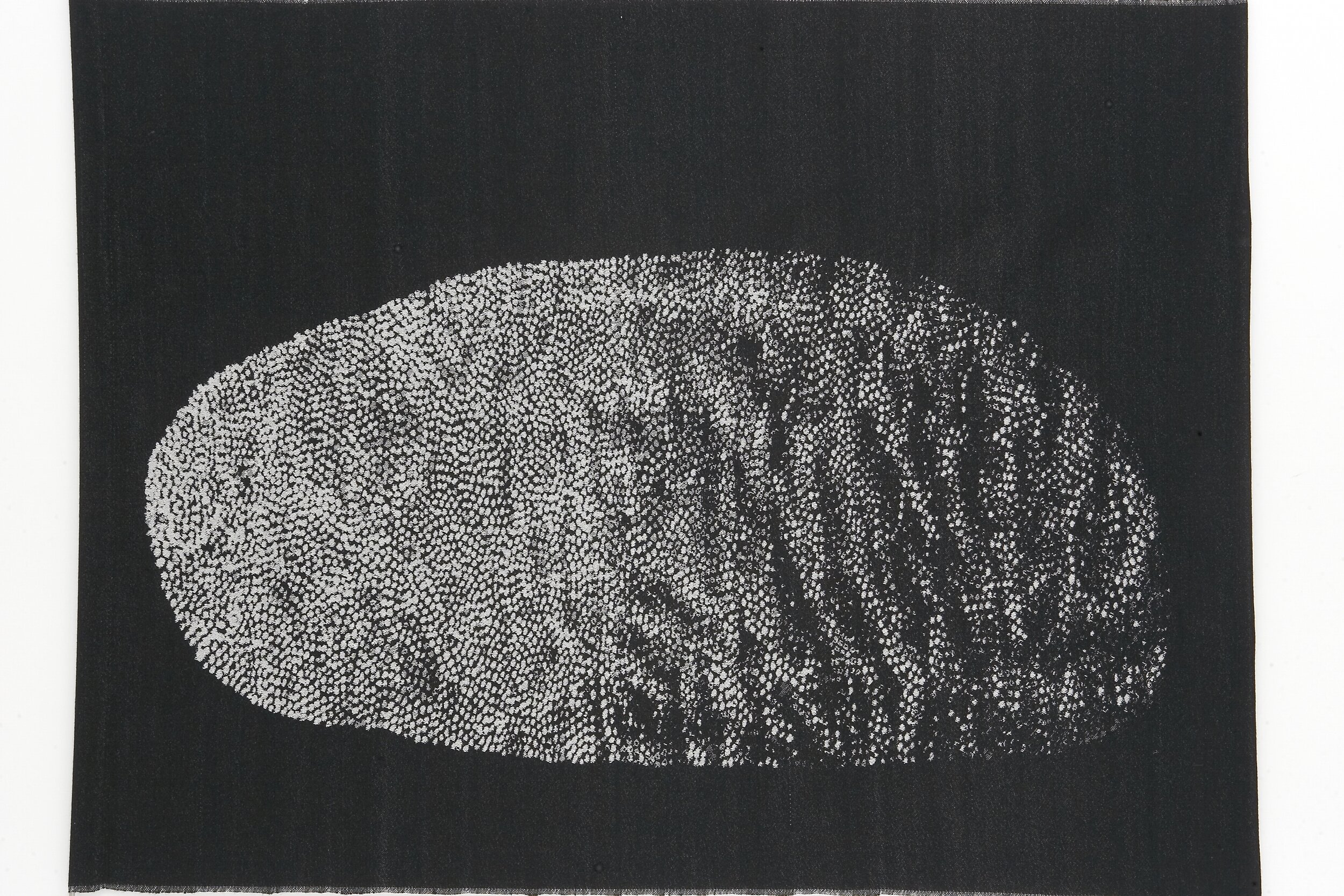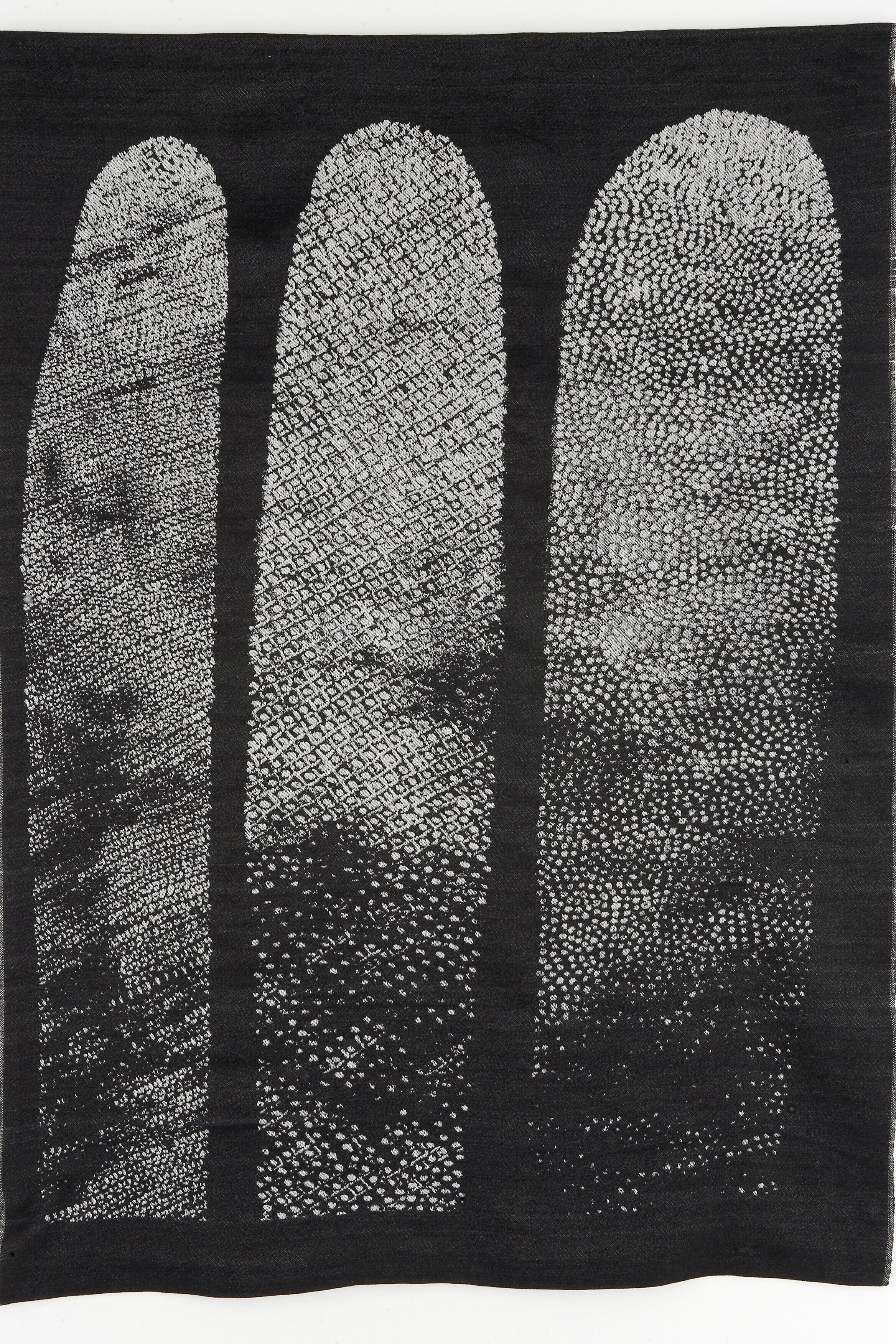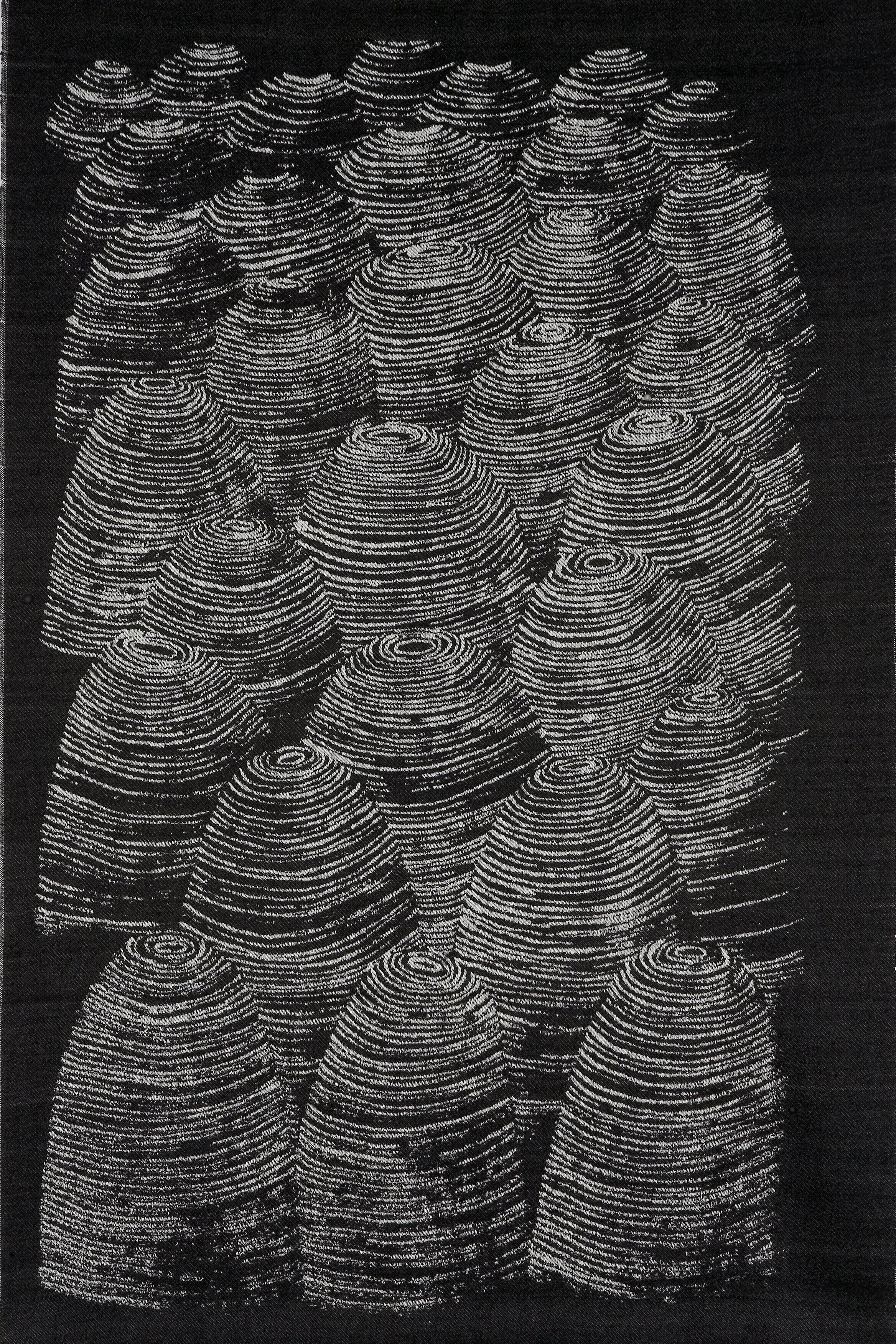






Primary experience of immersive Australian natural environment and flora inspired these artworks, woven at the Centre for Contemporary Textiles, Montreal, Canada. The Jacquard loom offers no repeat across the width or length of cloth. Considered large scale drawings using resist and black ink were developed from original small scale flora and topographical landscape vistas, photographed and manipulated in Jacquard software to keep tonal variations, weave structures as close to the original drawings as possible. The large artworks are woven in Australian merino wool and cotton. “Banksia” silk cloth with white, black and luminous orange hidden weft was produced in collaboration with Fondazione Arte della Seta Lisio, Florence and Bianchi, Como, Italy using a loom of 16,500 silk ends over a weaving width of 150cm, the finest possible density.
The first Jacquard loom was developed in Lyons, France by Joseph Marie Jacquard in 1803/4 and it revolutionised opportunities in versatility, complexity and production for textile designers and weavers. Previously draw boys were used underneath a draw loom to lift each weft row of threads manually in a design. The Jacquard loom paved the way for the modern computer and digital technologies, relying on a binary code of cut cards in multiple rows of eight holes, a cut hole or no hole corresponding to whether the loom lifted warp threads or not. Jacquard looms were set up with different arrangements of comber boards that predetermined the sett of cloth for purpose, the scale of design and type of repeat.